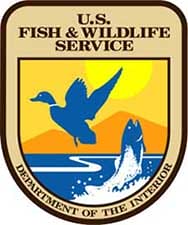Process will ensure species in greatest need are identified and addressed first, provide greater transparency and foster stakeholder engagement


Washington, DC -(AmmoLand.com)- The U.S. Fish and Wildlife Service announced its final methodology for improving the way it identifies and prioritizes pending Endangered Species Act (ESA) status reviews, the scientifically rigorous process the agency uses to determine whether a species warrants federal protection.
The new approach will allow the Service to be more strategic in how it addresses pending status reviews, to be more transparent in how it establishes workload priorities, and to work better with partners to conserve America’s most imperiled plants and wildlife.
“This is just another example of the U.S. Fish and Wildlife Service improving the way we do business,” said Service Director Dan Ashe. “This new methodology allows the Service to more effectively implement the Endangered Species Act by providing greater transparency and predictability to our partners and the public, by developing a common sense and defensible path to prioritizing pending status reviews, and by better identifying and tackling the needs of our most imperiled plants and wildlife first.”
The Service has over 500 species in line for consideration for listing under the ESA. With this new methodology, the Service will place each pending status review in one of five priority categories or “bins,” based on the available biological data, threats to the species, conservation efforts planned or underway that can address those threats, and the existence of any new or developing science that can help inform the status review. The methodology will ensure that the species most in need of consideration for listing are addressed first.
The draft methodology was published in January 2016, and the final methodology reflects minor changes based on public comments. Improvements include clarifying language on the descriptions of bins, an explanation of possible exceptions to the prioritization methodology, and clarification of considerations used to order actions within bins.
The five prioritization bins for pending status reviews, listed in priority order, and the revisions made to the final methodology are:
1: Highest Priority: Critically Imperiled – Species that appear to be critically imperiled and in need of immediate action. The final methodology clarifies language around the purpose and intent of this bin.
2: Strong Data Available on Species’ Status – Species for which we have existing strong scientific data supporting a clear decision on status.
3: New Science Underway to Inform Key Uncertainties – Species for which important emerging science on their status is underway to answer key questions that may influence the petition finding; uncertainty about species’ status can be resolved in a reasonable timeframe. A clarification of “reasonable timeframe” was added to the description of this bin.
4: Conservation Efforts in Development or Underway – Species for which proactive conservation efforts by states, landowners and stakeholders are underway or being developed. The conservation efforts should be organized and likely to reduce threats to the species. We clarified that conservation efforts should be developed or in place within a reasonable timeframe to be considered for placement in this bin.
5: Limited Data Currently Available – Species for which there is little information on status and threats available to inform a petition finding.
The resulting list of prioritized actions will be combined with other priorities of the Service’s work in a National Listing Workplan, to be shared with states and stakeholders and posted online in the coming months. In the workplan, the Service will share dates for when it plans to undertake status reviews and petition findings, using the new methodology to prioritize the order in which it will make those decisions.
The final methodology applies only to actions that consider whether to add a species to the lists of threatened and endangered species. Actions to remove species from the lists due to recovery or other reasons are prioritized and funded separately, and remain high priorities of the Service. This final methodology is intended to complement and be applied in conjunction with existing listing guidelines and policies.
The notice will publish in the Federal Register on July 27, 2016 (Docket Number: FWS–HQ–ES–2015–0169). It will also be available for public inspection in the Reading Room on July 26, 2016 at www.federalregister.gov/
To learn more about the Service’s commitment to improving the implementation and effectiveness of the ESA, visit our page at: www.fws.gov/endangered/
The ESA provides a critical safety net for fish, wildlife and plants and has prevented the extinction of 99 percent of the species originally listed as threatened or endangered, including hundreds of imperiled species, and has promoted the recovery of many others. The Service is actively engaged with conservation partners and the public in the search for improved and innovative ways to conserve and recover imperiled species.
To learn more about the ESA petitioning and listing processes, please visit www.fws.gov/endangered/what-
About the U.S. Fish and Wildlife:
The mission of the U.S. Fish and Wildlife Service is working with others to conserve, protect, and enhance fish, wildlife, plants, and their habitats for the continuing benefit of the American people. We are both a leader and trusted partner in fish and wildlife conservation, known for our scientific excellence, stewardship of lands and natural resources, dedicated professionals, and commitment to public service. For more information on our work and the people who make it happen, visit www.fws.gov.
For more information on our work and the people who make it happen, visit http://www.fws.gov/. Connect with our Facebook page, follow our tweets, watch our YouTube Channel and download photos from our Flickr page.
